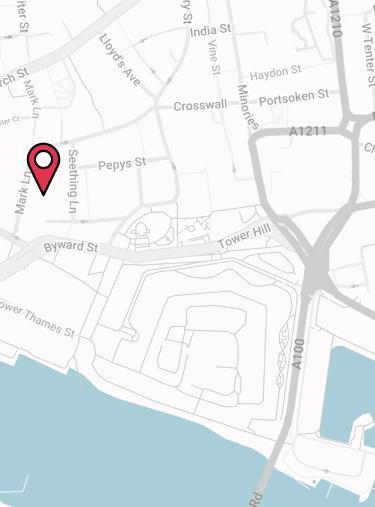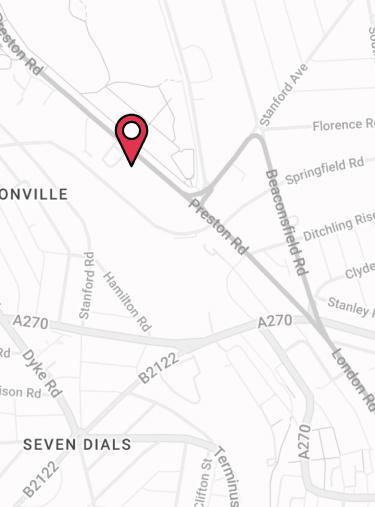
How To Communicate Employee Benefits To Staff
Communicating employee benefits to your staff is crucial. Even employers with the best reward packages can fall flat at this stage. If employees aren’t aware of their benefits, or how to use them, their value is essentially lost.
Simply letting employees know about their benefits once isn’t enough either. For employees to take action, they statistically need to see a message three to five times. Without regular communication, your staff aren’t likely to engage with what’s on offer.
As an employer you need to have a well-planned communication strategy that outlines when, where and how you will deliver messages about your benefits. Getting started can be daunting, which is why we’ve put together the below guide on how to communicate employee benefits effectively.
Why Are Employee Benefits Important?
Employee benefits can make a significant difference when it comes to retaining and attracting top talent. It’s not enough to offer just a good salary any more; employees want to feel valued, and expect additional perks on top of their monthly wage.
To give you an idea of the impact benefits can have, in our recent Employee Benefits And Workplace Satisfaction Survey 26% of employees said that a lack of benefits actually causes them to be unhappy.
It’s well known that unhappy staff who feel undervalued are typically less engaged, motivated and productive than their happier counterparts. As such, the importance of having competitive perks and rewards can’t be overestimated.

The right benefits can help staff feel understood and valued. In turn, they become less stressed, more productive, and more loyal.
So, a comprehensive benefits programme is an advantage for both employees and employers. From improved wellbeing to team productivity, these schemes enhance businesses in various ways.
Joseph Toft
Senior Consultant, Employee Benefits
Importance Of Communicating Employee Benefits
You could have the best benefits package in the world, yet if you don’t effectively communicate it, it won’t get used. It is vital that you tell your employees what’s on offer, then tell them again… and again… and again!
As an employer it is in your best interest to create an effect communication strategy, as providing consistent and regular communication helps too:
- Increase Awareness
By clearly communicating the benefits and how to use them, you can help your staff take full advantage of the benefits package. This not only improves employee satisfaction, but also demonstrates the value of the benefits you’ve chosen to invest in. - Boost Engagement
Employees who understand and appreciate their benefits are more likely to feel engaged and committed to their work. This is because they will feel that you as an employer care about their ‘ well-being and are investing in their success. - Meet Regulation
Some employee benefits, such as workplace pensions, require employers to provide certain mandatory communication. Employers need to communicate such benefits to ensure that they comply with regulatory requirements, avoid penalties, and keep their employees informed. - Improved Business Performance
By making employees aware of benefits, providing information on how to use them, and ensuring that they are fully utilised, an employer can improve employee health and financial wellbeing. This can lead to reduced absenteeism, higher job satisfaction, and increased employee retention.
In our recent Employee Benefits & Workplace Satisfaction Survey, 46% of employees said they either didn’t get any communication or only received information once / when joining their company.
This could go some way to explaining why 25% also said they were unsatisfied with their employee benefits. If they aren’t being regularly reminded of what’s on offer, they won’t know what’s available.
Plan How To Communicate Employee Benefits Effectively
As with all aspects of a business, planning is key when it comes to effectively communicating. You need to know what you want to achieve, the messages you want to convey, and how you’ll deliver them.
Before you start communicating with your employees, you need to come up with an effective employee engagement strategy. To achieve this, you’ll need to think about the following:
1. What Is Your Budget?
Some forms of communication will require a budget. For example, emails are a relatively low cost channel to use. However, if you wanted to produce a video or posters, there will be design costs involved. Your budget will determine the types of communication and channels you use.
2. Defining Your Messaging
When communicating benefits, you need to define what messages you want to convey to your employees. This is to ensure that everyone receives the same message and is clear on exactly what is available.
Some employee benefits are easily confused. For instance, Company Health Insurance and Corporate Health Cash Plans are often mixed up. In fact, there’s a big difference between the two, and they serve very different functions. You need to be clear about exactly what benefits are on offer and the role they perform.
3. Tailoring & Personalising Communications
Rather than sending a generic email, tailoring a message shows that you know and care about staff. Personalised communication makes people more inclined to listen to you, too. People like to be called by their name, so make sure you use it in your employee benefits communications.
Also, think about how you can segment your employees based on what you know about them. For example, if you have a number of employees at retirement planning age, you could send them tailored messaging about the importance of retirement planning and promote any financial education you can offer.
4. When & How To Communicate Employee Benefits
As part of the planning process, it is also key to identify when and via what channels communication will be delivered. As mentioned above, it’s not enough to tell employees once. They need regular communications, across multiple different channels, to ensure the highest levels of engagement.
Communicate Employee Benefits Regularly
As part of your plan, you should be able to identify key points and milestones that provide you with a good opportunity to promote your benefits. This can include:
During The Recruitment Process
Make sure you clearly promote the employee benefits you offer while recruiting. Clearly state what benefits a potential candidate would be eligible for in a job listing and reiterate this in job interviews, in offer letters and during inductions.
At Regular Intervals Throughout The Year
To engage staff, you need to keep communication consistent throughout the year. Key opportunities include:
- Staff 1-2-1’s
- Monthly / quarterly email communications
- Staff milestones (new life stage such as parenthood or home ownership)
- Company-wide briefings
- Annual pay reviews.
A consistent approach like this is an important failsafe. If an employee misses one message, they’ll still be able to hear about it in another way.
When Benefits Change
It’s vital to update employees if benefits change or are no longer available. Having open and honest communication will prevent confusion and disappointment.
As soon as a change takes place, you need to make people aware of it. You also need to update future communications to make sure they’re clear and correct.
Communicate Employee Benefits Via Different Channels
There are many ways to communicate with your staff. Diversifying your approach gives you the best chance of reaching more employees. And once you do, they’ll be able to make use of the benefits you’re providing.
Email is a simple, yet effective way of targeting a large number of employees and it’s cost effective. You can send messages straight to employees’ inboxes and as you can easily segment audiences, you can be more tailored in your messaging.
Videos
This particular form of communication is becoming more and more popular for employee engagement. Videos are also very versatile. Once produced, you can share it across multiple different channels. However, this option will require budget, unless you have an in house team who can produce it.
Notice Boards
Notice boards can be physical or digital. Physical notice boards in the office are a more traditional form of communication. If you don’t have the option of an office wall, you can opt for a digital notice board. This can sit on your internal website where all staff in the organisation can access it.
Social Media
On average people spend 147 minutes a day on social media, so if you have an employee-facing account it could be worth utilising. Many people are more active on social media than other channels, so it could be an opportunity missed if you don’t use it.
SPECIALIST TIP! 🤓
If you know staff members who have used benefits, get them to tell their story. You can then use this across different communication channels to provide other employees with a tangible example of how they could benefit from it too.
HR Software
Some companies use HR software for employees to book holiday, record sickness, and so on. If you have this kind of software, you can add messages about your employee benefits package. This is a good way for staff to not only find out about what is available, but also to choose the benefits they opt for.
Total Reward Statements
An increasingly popular way to communicate employee benefits is through Total Reward Statements. These are documents which are personalised to each employee. They display each member’s total compensation, including salary, pension, and employee benefits.
Using Total Reward Statements is an effective way to underline your perks and rewards. It helps staff understand how valued they are by showing everything that’s on offer to them, including its monetary value. They not only provide a holistic view of all your benefits, they promote an open and honest culture.
Employee Benefits Platform
Another option is to use an employee benefits platform where staff can interact with their benefits and rewards. They can view all their rewards in one place and access everything you’re offering.
Our own employee benefits platform; My Drewberry. It’s a market-leading platform that handles all the admin of your benefits and more. Staff can:
- Show each other recognition through the Praise feature
- View their unique Total Reward Statements
- Access an Employee Discount Scheme to save money on top brands
- Take out salary sacrifice agreements automatically, without you handling the paperwork.
While there are other platforms out there, we’ve listened carefully to our clients and understood their pain points. My Drewberry overcomes a lot of the pitfalls that many other benefits platforms don’t offer.
If you want to know more about how it can help you and your staff give us a call 02074425880 or email help@drewberry.co.uk.

When it comes to communicating benefits, don’t forget to utilise management too. Ask them to cascade information to their teams. This could be at employee meetings, at monthly or quarterly 1-2-1’s, or staff briefings.
Nadeem Farid
Head of Health & Wellbeing Benefits
Companies Who Offer And Communicate Benefits Well
Ultimately, to ensure your employee benefits are successful, you need to offer benefits your staff really want and communicate them effectively. Companies that have done this successfully include:
Netflix
Netflix provides its employees with unlimited holiday and no set working hours. This allows staff to balance their personal and professional responsibilities. It results in improved employee wellbeing and a positive workplace culture. Since these are contractual benefits, staff are aware of their existence from day one.
While this may not be feasible for all employers to implement, there are other options out there. You could also find success in introducing flexi-time working or a Holiday Trading scheme. These schemes can have a similarly positive effect on employee health and wellbeing.
HubSpot
HubSpot also provides its staff with unlimited holidays and flexible working. Along with this, they reimburse any tuition employees receive. By making an investment in employees’ education, they benefit from a happier and more skilled workforce.
Campbell Soup Company
Turns out that soup isn’t just good for your soul, it can also be good for your health too. Campbell Soup Company offers full health cover, free flu jabs, and on-site fitness centres.
They also offer healthy cooking lessons to help employees maintain their wellbeing. For staff with children, a full play school and after-school programmes for kids up to 12 are also on offer.
Compare Employee Benefits Quotes And Get Specialist Advice
The process of setting up employee benefits packages can be a big challenge. You might want to include Group Life Insurance, Group Income Protection, or Group Critical Illness. On top of that, communicating perks and rewards to employees can require a lot of work.
Many employers find that their internal communications use a great deal of resources. That’s why many choose to use external services to set up and manage their benefits.
At Drewberry, we can handle all the heavy lifting for you. From understanding your needs to launching your chosen benefits, we’re here to help. For help with your employee benefits, get in touch with one of our friendly specialist advisors today.
Why Speak to Us?
Employee benefits can be a headache. But our specialists do this day-in, day-out, offering first class service when you need it most. Here’s why you should talk to us:
- Award-winning independent employee benefits consultants, working with leading UK insurers and benefit providers
- Assigned specialist on hand to help – every step of the way
- 4072 and growing independent client reviews rating us at 4.92 / 5
- Authorised and regulated by the Financial Conduct Authority. Find us on the financial services register
- Claims support when you need it most.
If you need to discuss your current benefit offerings or set up a new package, get in touch with us today. You can email help@drewberry.co.uk or pop us a call on 02074425880, and speak to one of our friendly specialist advisers.
Contact Us
125-135 Preston Road
Brighton
BN1 6AF
Cookies
Drewberry™ uses cookies to offer you the best experience online. By continuing to use our website you agree to the use of cookies including for ad personalization.
If you would like to know more about cookies and how to manage them please view our privacy & cookie policy.








